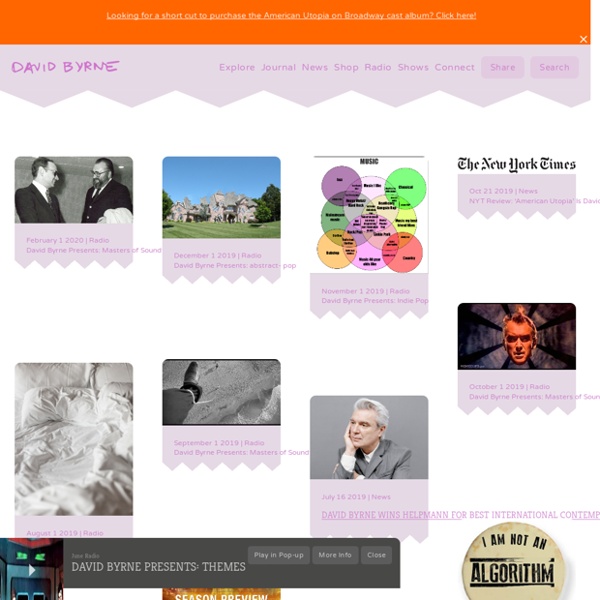



Talking Heads History[edit] 1974–1977: First years[edit] David Byrne, Chris Frantz and Tina Weymouth were alumni of the Rhode Island School of Design in Providence, Rhode Island. There Byrne and Frantz formed a band called "The Artistics" in 1974.[4] Weymouth was Frantz's girlfriend and often provided the band with transportation. In a later interview, Weymouth recalled how the group chose the name Talking Heads: "A friend had found the name in the TV Guide, which explained the term used by TV studios to describe a head-and-shoulder shot of a person talking as 'all content, no action.' Later in 1975, the trio recorded a series of demos for CBS, but the band was not signed to the label. Their first album, Talking Heads: 77, which did not contain the earlier single, was released soon thereafter. 1978–1982: Building a reputation[edit] Tina Weymouth on bass in Minneapolis, Minn. 1983–1991: Height of commercial success and break-up[edit] 1992–2002: Post break-up and final reunion[edit] Influence[edit]
David Byrne.com My Life in the Bush of Ghosts (album) Pitchfork Media listed My Life in the Bush of Ghosts as the 21st best album of the 1980s. Slant Magazine listed the album at No. 83 on its list of the "Best Albums of 1980s".[16] The album was recorded entirely with analogue technology, before the advent of digital sequencing and MIDI. The sampled voices were synchronized with the instrumental tracks via trial and error, a practice that was often frustrating, but which also produced several happy accidents. Also according to Byrne's 2006 notes, neither he nor Eno had read Tutuola's novel before the album was recorded. Both were familiar with Tutuola's earlier The Palm-Wine Drinkard (1952), but his My Life in the Bush of Ghosts was not easily obtained in the U.S. when the material was recorded. The album was reissued on March 27, 2006 in the UK and April 11, 2006 in the US, remastered and with seven extra tracks. The track "Qu'ran" was excluded from this release without comment. All tracks written by Eno/Byrne except as indicated.
The Historic Gold Star Recording Studio and the Audio Legacy of Producer Phil Spector Phil Spector has been away from his Alhambra, California-home and the recording studio since spring of 2009, when a California jury convicted him of second-degree murder in the 2003 death of actress and comedian Lana Clarkson. At the moment Spector is serving 19 years to life for the fatal shooting of Clarkson. Spector is actively preparing his appeal from Corcoran State Prison in Central California. Phil Spector’s Legacy There is saying in the game of American football. “Everyday is like 4th and 1.” The legacy of Phil Spector’s recordings and songwriting achievements as well as the ongoing impact and omnipresent influence of the Gold Star recording studio in Hollywood, Ca. where he executed his historic productions should never be forgotten, tarnished or even tainted by the results of this legal decision. Spector’s catalogue is now controlled by EMI who administrates both his music publishing and masters tapes. Gold Star and Spector were a special force A: It was all tubes. The ‘Big T.N.T.
David Byrne David Byrne, known as the force behind Talking Heads and later as creator of the highly-regarded record-label Luaka Bop, also works as a photographer, film director, author, and solo artist; he has been publishing and exhibiting visual art for more than a decade. Grown Backwards was Byrne’s first Nonesuch Records release. “There are a few artists today who are so original in what they do that one can truly say they sound like no one else in the world,” says label president Robert Hurwitz. “This is what we have always felt about David Byrne, and this is how we feel about Grown Backwards, his first record on Nonesuch. It is a great privilege to work with him.”
Rap Genius David Byrne Although best known for his groundbreaking tenure fronting the new wave group Talking Heads, David Byrne also received acclaim for his adventurous solo career, encroaching upon such diverse media as world music, filmmaking, and performance art in the process. Born in Dumbarton, Scotland, on May 14, 1952, Byrne was raised in Baltimore, MD. The son of an electronics engineer, he played guitar in a series of teenage bands before attending the prestigious Rhode Island School of Design, where, feeling alienated from the largely upper-class student population, he dropped out after one year. However, he remained in the Providence area, performing solo on a ukulele before forming the Artistics (also known as the Autistics) with fellow students Chris Frantz and Tina Weymouth. After changing the name of the band to Talking Heads and enlisting onetime Modern Lover Jerry Harrison, the group signed to Sire Records.
Set List: Randy Newman | Music | Set List In Set List, we talk to veteran musicians about some of their most famous songs, learning about their lives and careers in the process, and maybe hearing a good backstage anecdote or two. The musician: Although he’s perhaps best known these days as the funny-looking guy who regularly turns up on the Academy Awards broadcast singing cartoon songs, Randy Newman was a songwriter’s songwriter before he ever put notes in Buzz Lightyear’s mouth. Newman’s father was a doctor, but his paternal uncles Alfred, Lionel, and Emil were Hollywood film composers, and he sat in on orchestral recording sessions almost from the point where he was old enough to walk into them. He cut his first single while still in his teens and was briefly a member of a group that became Harpers Bizarre, but Newman didn’t look or sound like anyone’s idea of a pop star. It wasn’t until Harry Nilsson devoted the entirety of his 1970 album Nilsson Sings Newman to Newman’s songs that the industry began to take notice.